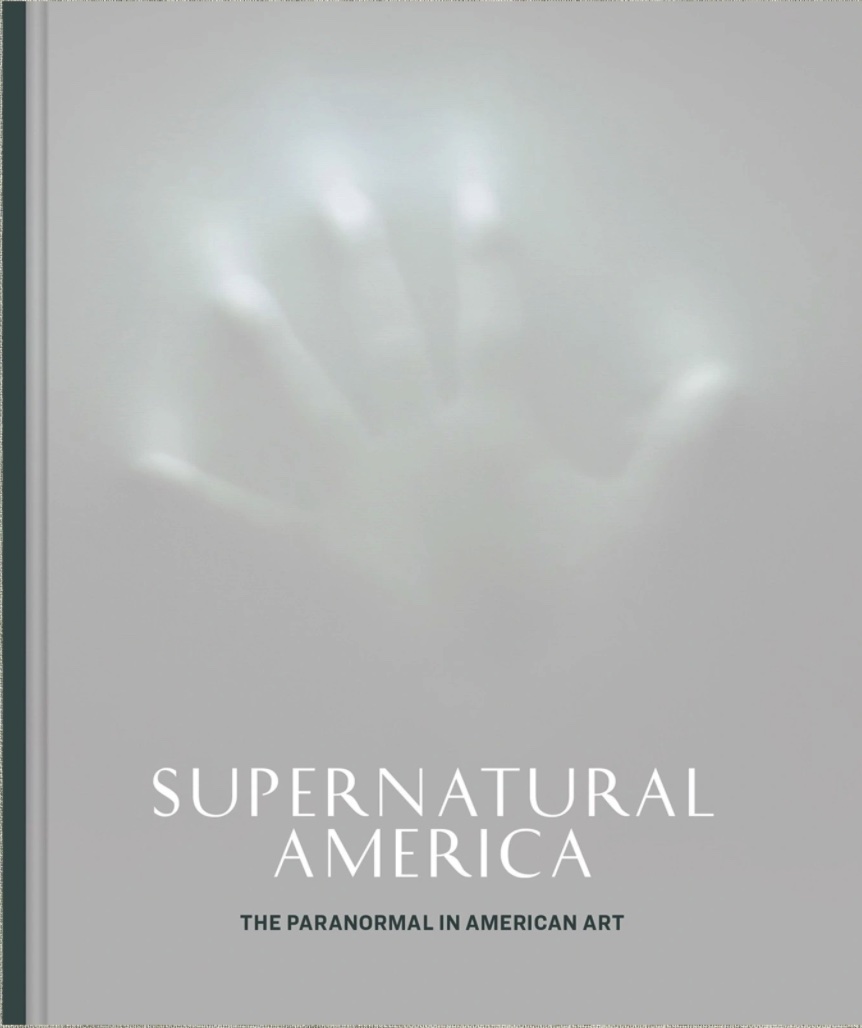Supernatural America: The Paranormal in American Art is a hefty hardcover exhibition catalog with seventeen essays by different authors offering thoughtful insights from historical, theoretical, and artistic perspectives on the works illustrated in the 203 full-page colour plates and hundreds of additional figures. The original show was curated by Robert Cozzolino and organized by the Minneapolis Institute of Art, where it finished touring (February 19 through May 15, 2022) after stops at the Toledo Museum of Art (June 12 through September 5, 2021) and the Speed Art Museum (October 7, 2021, through January 2, 2022). Cozzolino also edited the catalog, which includes text contributions ranging in length from one to twenty-two pages and all the other extras that come with professional scholarship: endnotes, a foreword, an introduction, a bibliography, credit lists, acknowledgements, a list of lenders, and more. All of the essays incorporate in-text citations to both figures and plates as needed: readers who are actively engaged with the content will appreciate this seemingly minor point of presentation. Given that some artists and works are discussed in more than one essay, an index would have been handy, but it is hard to pose a heartfelt complaint about that one absence when it is so easy to just keep reading and make one's own notes on repeating subjects of interest.
History, notably the history of spiritualism, is the unavoidable center around which the entire project developed, and the contributing artists and authors, as well as the organization of the content itself, offer extraordinarily varied avenues into the subject. The plate arrangement divides the art according to subsections: "America as a Haunted Place," "Apparitions," "Channelling Spirits/Ritual," and "Plural Universes." Other ways of contextualizing and understanding the images are offered in the written sections. For the art historian in everyone, there is Cozzolino's Introduction and essay "These Unseen Beings," Rachael Z. DeLue's "'Things not Tangible': Portraits, Sitters, and the Supernatural," and Adam M. Thomas's "How to Paint a Ghost around 1900." Some contributions focus more on concepts in context, such as hauntology (Maria del Pilar Blanco), the uncanny and Winchester House and other locations (Sarah Burns), and deconstruction in application to magic (George P. Hanson). Specific innovations are also credited with the effect they have had on ideas about the spirit realm, how to see it, how to contact those in it, and how to represent it. In technology, these include the infinite possibilities of photography (Alexander Nemerov), the phantasmagoria (Wendy Bellion) and Kirlian photography (Michelle Donnelly); and in material culture, planchettes and Ouija boards are unavoidable notables (Brandon Hodge). As might be expected in an historical representation of such a broadly conceived topic, there is little here on very recent art. However, two of the last five entries—"Black Black Magic" (Bridget R. Cooks) and "The Rootworker's Worktable" (Renée Stout)—both of which are quite short—invite the reader a little closer to the present. The final three: "Contemporary Witch Culture" (Lacey Prpic Hedtke), "Goddess, Body, and Earth: Feminist Spirits in the 1970s" (Rachel Middleman), and finally "Popular Culture and the Paranormal/Supernatural (Jeffrey Andrew Weinstock), turn to predominantly later twentieth-century themes.
The chronological high points that might be conscripted to a history of the supernatural may be familiar, at least in passing, to many, and content keywords like uncanny and phantasmagoria and even hauntology do not in themselves promise a collection or book of any particular originality. However, there is a great deal in Supernatural America to surprise, intrigue, and foster many, many hours of thoughtful consideration. The attentive reader will quickly realize that Cozzolino's reach not only extends over the same chronological ground as America itself, it is also excavates its depths; which is to say, he did not simply curate an exhibition of spooky pictures. Yes, there are ghosts and other apparitions, but show and book alike are about what it means to see ghosts, to be haunted, and, most of all, to draw on a myriad of supernatural experiences in the making of art.
Some of these experiences belong to historical collectives, such as those of the settlers who pursued the vision of manifest destiny only to became spectres of death and destruction to the peoples they displaced. The descendants of both groups are haunted by that past. Similarly, slavery and the persecution of witches may have become the stuff of history, but both continue to thrive in the collective shadow with an undiminished potential for violent manifestation. Many of these and other supernatural events are experienced in deeply personal ways. Some artists transform their hauntings by rendering the associated places and people in their work. The emphasis here is clearly on visual representations: paintings, sculpture, assemblages, photographs, and video, but many of the authors find co-relations between the visual and the verbal. Thus, William Faulkner and Shirley Jackson are included in the discussion of uncanny spaces, graphic novelist Kyle Baker is part of "Black Black Magic," and numerous other authors and even some musicians are interlocutors in different essays. The mingling of perspectives offered through a variety of media to the understanding of the visual makes for fascinating reading (and ever-lengthening to-be-read lists).
However, although the mixing of the historical and the personal and a variety of media are the essential means by which the content is presented, they are not in themselves the underlying key to the success of the catalog. What truly makes Supernatural America is its treatment of the supernatural in all its manifestations—ghosts, spirits, and even UFOs—as real rather than as metaphors or entertainment tropes. The metaphor is a literary device, a figure of speech by which a thing is described as if it were something other than it actually is. A ghost is real. A bed sheet over a shrub is a metaphor. Supernatural America, as Cozzolino intended, demonstrates just how real the supernatural is.
~review by Emily E. Auger
Editor: Robert Cozzolino
Minneapolis Institute of Art in association with the University of Chicago Press, 2021
50 US$

